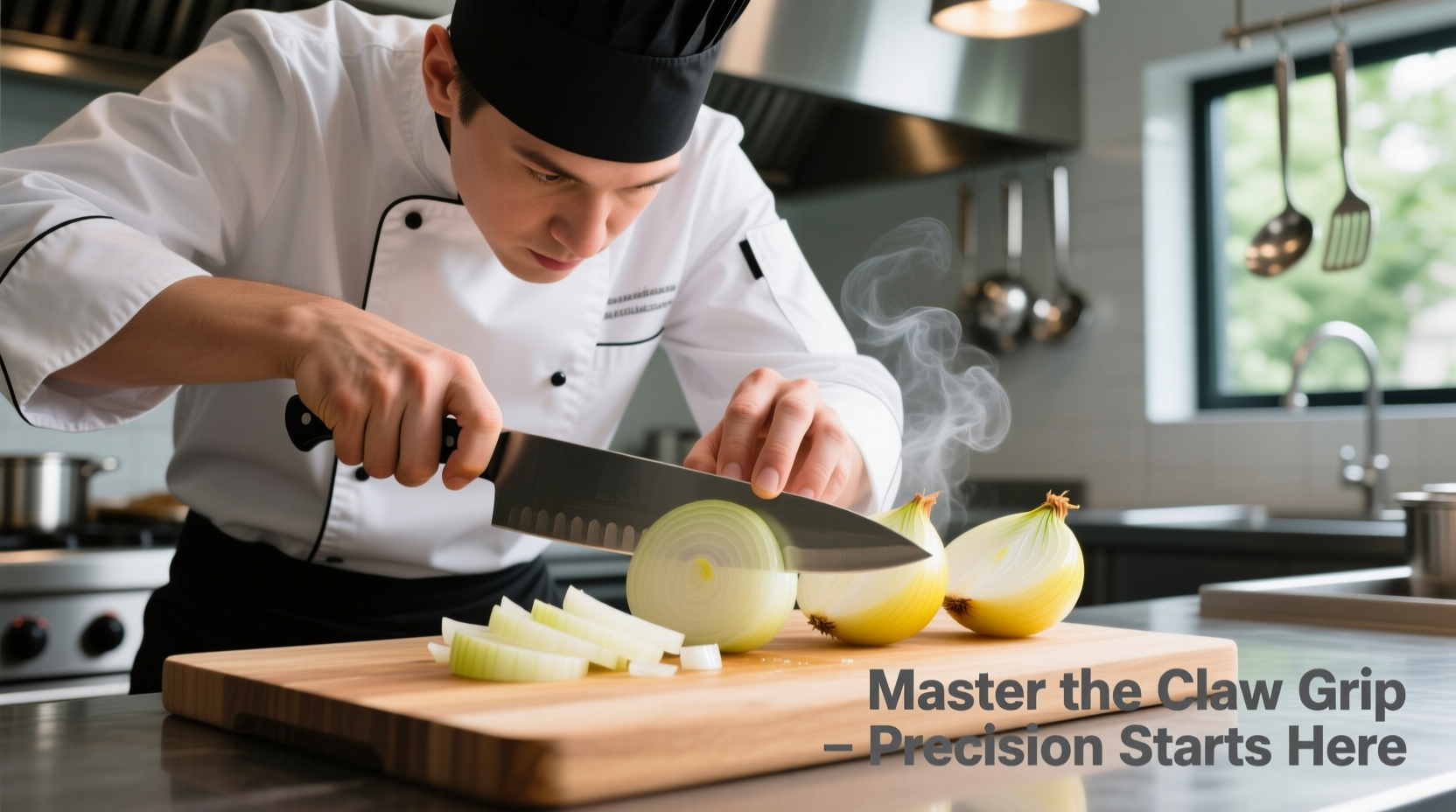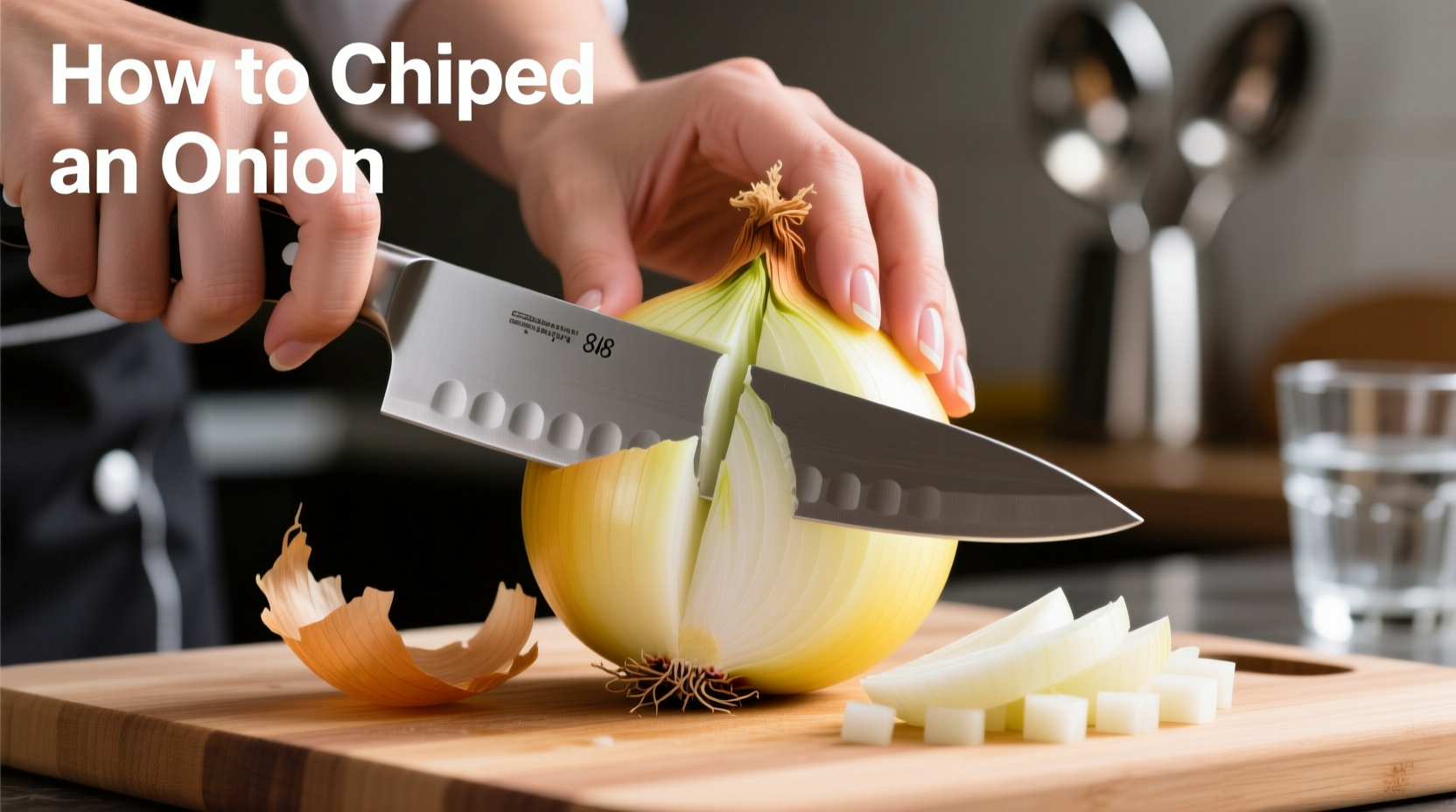Mastering onion chopping transforms your cooking experience. Whether you're preparing a French mirepoix, Spanish sofrito, or Asian stir-fry, proper technique affects flavor distribution, cooking time, and dish texture. Professional chefs consistently use this method because it maximizes control while minimizing eye irritation.
Essential Tools for Perfect Onion Chopping
Before starting, gather these kitchen essentials:
- A sharp 8-inch chef's knife (dull blades crush cells, releasing more irritants)
- A stable cutting board (wood or composite)
- A bowl of cold water (for tear prevention)
- Moist paper towels (alternative tear-reduction method)
Step-by-Step Onion Chopping Technique
Preparation Phase: Safety First
Place the onion on its side and slice off the stem end while keeping the root intact. This preserves the sulfur compounds' containment. Remove the outer skin and any papery layers. Never cut through the root end during preparation—it's your anchor point for controlled slicing.
Horizontal Cutting: Building the Foundation
Lay the onion half flat-side down. Make 2-3 horizontal cuts from the stem toward the root, stopping about ¼ inch from the root end. These cuts create layers that will separate when you make your final slices. The number of horizontal cuts depends on your desired dice size—more cuts for finer mince.
| Onion Cut Type | Horizontal Cuts | Vertical Cuts | Culinary Application |
|---|---|---|---|
| Large Dice | 1-2 cuts | 3-4 cuts | Stews, roasts |
| Medium Dice | 2-3 cuts | 4-5 cuts | Sauces, soups |
| Small Dice | 3-4 cuts | 5-6 cuts | Salsas, garnishes |
| Finely Mince | 4-5 cuts | 6-8 cuts | Relishes, compound butters |
Vertical Cutting: Creating the Grid
Rotate the onion 90 degrees and make vertical cuts from stem to root, again stopping short of the root end. The spacing between cuts determines your final dice size. For consistent results, maintain equal spacing—professional chefs use the width of their knife blade as a guide.
Final Slicing: Perfect Uniform Pieces
Holding the onion together with your non-dominant hand (using the claw grip for safety), slice perpendicularly across your previous cuts. The root end keeps everything together until your final slice, preventing scattered pieces. Discard the root after chopping.

Science-Backed Tear Prevention Methods
Onion tears occur when syn-propanethial-S-oxide gas contacts moisture in your eyes. According to research from the National Academy of Sciences, these effective methods reduce irritation:
- Cut near running water or under a vent to disperse gases
- Chill onions for 30 minutes before cutting (slows enzyme reaction)
- Use a sharp knife to minimize cell damage
- Wear kitchen-safe goggles for complete protection
Common Mistakes and Professional Fixes
Even experienced home cooks make these errors:
- Mistake: Cutting through the root end first
Solution: Always preserve the root until final slicing for structural integrity - Mistake: Using a rocking knife motion
Solution: Keep the tip anchored for precise, controlled cuts - Mistake: Inconsistent piece sizes
Solution: Maintain equal spacing between vertical cuts using your knife width as reference
When to Use Different Onion Cuts
Understanding culinary context prevents recipe failures. French culinary tradition distinguishes cuts based on cooking time and flavor integration:
- Large dice (½ inch): Use in long-cooking dishes like beef bourguignon where onions should maintain structure
- Medium dice (¼ inch): Ideal for tomato sauces and soups requiring even flavor distribution
- Small dice (⅛ inch): Essential for salsas and garnishes where texture matters
- Finely minced: Required for compound butters and relishes needing seamless integration
Storing Chopped Onions Properly
Refrigerate chopped onions in airtight containers for up to 5 days. According to USDA food safety guidelines, never store at room temperature for more than 2 hours. For longer storage, freeze in ice cube trays covered with water—these frozen onion cubes work perfectly in soups and stews.
Advanced Techniques for Specific Cuisines
Different culinary traditions require specialized chopping approaches:
- Mexican cuisine: Finely mince white onions for pico de gallo with minimal horizontal cuts
- French cuisine: Medium dice for mirepoix with equal parts onion, carrot, and celery
- Indian cuisine: Thin half-moons for quick-cooking curries
- Japanese cuisine: Julienned onions for toppings requiring delicate texture











 浙公网安备
33010002000092号
浙公网安备
33010002000092号 浙B2-20120091-4
浙B2-20120091-4